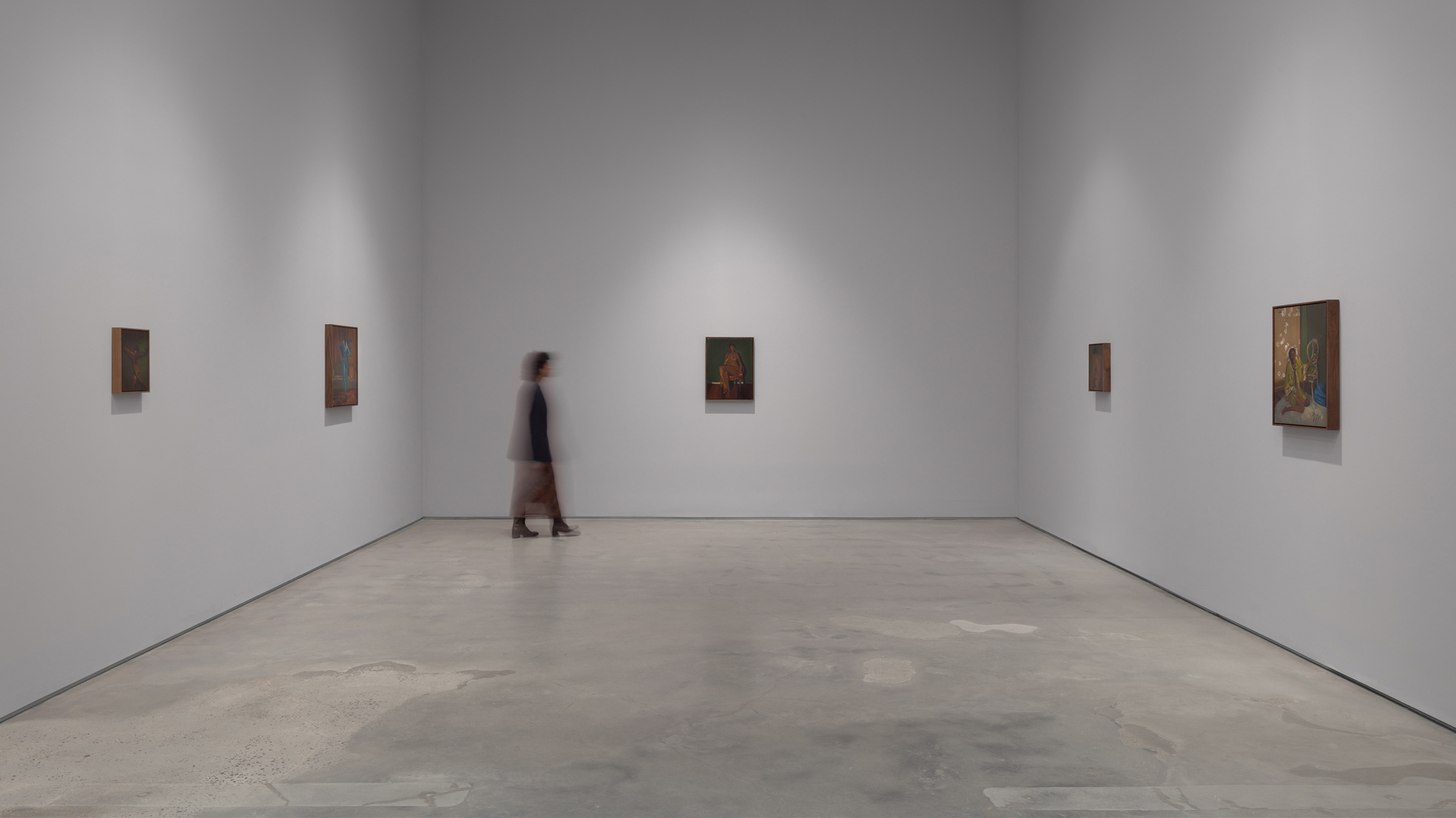On view at Marianne Boesky Gallery in Chelsea, the artist’s paintings are a gleaming tribute to womanhood and perfectionism
Glamor is hard to carry and even harder to sustain. Except for the figures in Danielle Mckinney’s Quiet Storm, now on display at Marianne Boesky Gallery, who make it look so easy, even at the end of the day, when they seem burned out, exhausted—from what nobody knows or cares much about. Perhaps that’s why they also project a peculiar loneliness. When alone, though, they withdraw into their psyche, coming face-to-face with latent fears and anxieties—of what? It hardly matters. The real point lies between true emotions and their depictions on canvas.
The show offers 12 oil paintings, each a sympathetic portrait of a different heroine, but they’re all variations on Mckinney’s ideal woman. Winter Sonnet captures her naked and asleep on a velvety couch, her head in her arms. You can almost hear her breathing and smell the spiral of smoke rising from her cigarette. Things turn sour in some pieces, like Evening Star, which features her in a green silk kimono, still smoking, her face almost petulant. She slumps on the floor, as if too tired to stand up for the second it would take balance to set in. Hers is a world of artifice, illusion, projection, where there’s a pose for every temperament.
But the fact is, she doesn’t exist. Mckinney paints from imagination and is not afraid of glamorization, often pushing a relentless pursuit of physical beauty as a way of articulating her baseline. She adores these women, of course, but her adoration absorbs any sentimental guff about their complexity and contradiction; she takes those as a given. But nothing short of perfection will do. Her gaze is surprisingly strict for how swiftly and tenderly brushed her portraits are. That contrast, though, gives an edge of discomfort to material that could have easily fallen into simple prettiness.
Mckinney favors deep, dark backgrounds and soft brushstrokes that seem relatively large for her paintings. Her style heavily echoes those of the Impressionists and their more original students; its resemblance to the work of Lynette Yiadom-Boakye is uncanny. But she also shares with artists as diverse as Ramon Casas, Felice Casorati, Norman Blamey, Jane Fisher and, more recently, Salman Toor, an ability to capture the precarious mood of glamor, balanced between drama and frivolity. That’s exceedingly rare. At their best, her paintings thaw and glow like half-melted ice cubes.
In the world of Sacrament, a woman stands in a pose of prickly provocation, hands on hips, with (you guessed it) a burning cigarette blooming between two fingers. She raises her chin and arches an eyebrow, daring you to look at her. A print of Henri Matisse’s La Danse hangs on the wall behind her, the blue sky matching her plush onesies. Here glamor isn’t predicated solely on the fundamentals of good taste and refinement. It’s an attitude.
Race is a central theme in Mckinney’s work, as it naturally must be for an artist who makes it a personal mission to only paint Black women. She comes at it from the point of privilege—the way it coddles and protects those who have it. But there’s no grievance, just a poignant moment where she claims a piece of that privilege pie. To that end, is it so bad to indulge in a bit of glamor? No matter, her women stay lounging and lolling as their cigarettes drag on.











